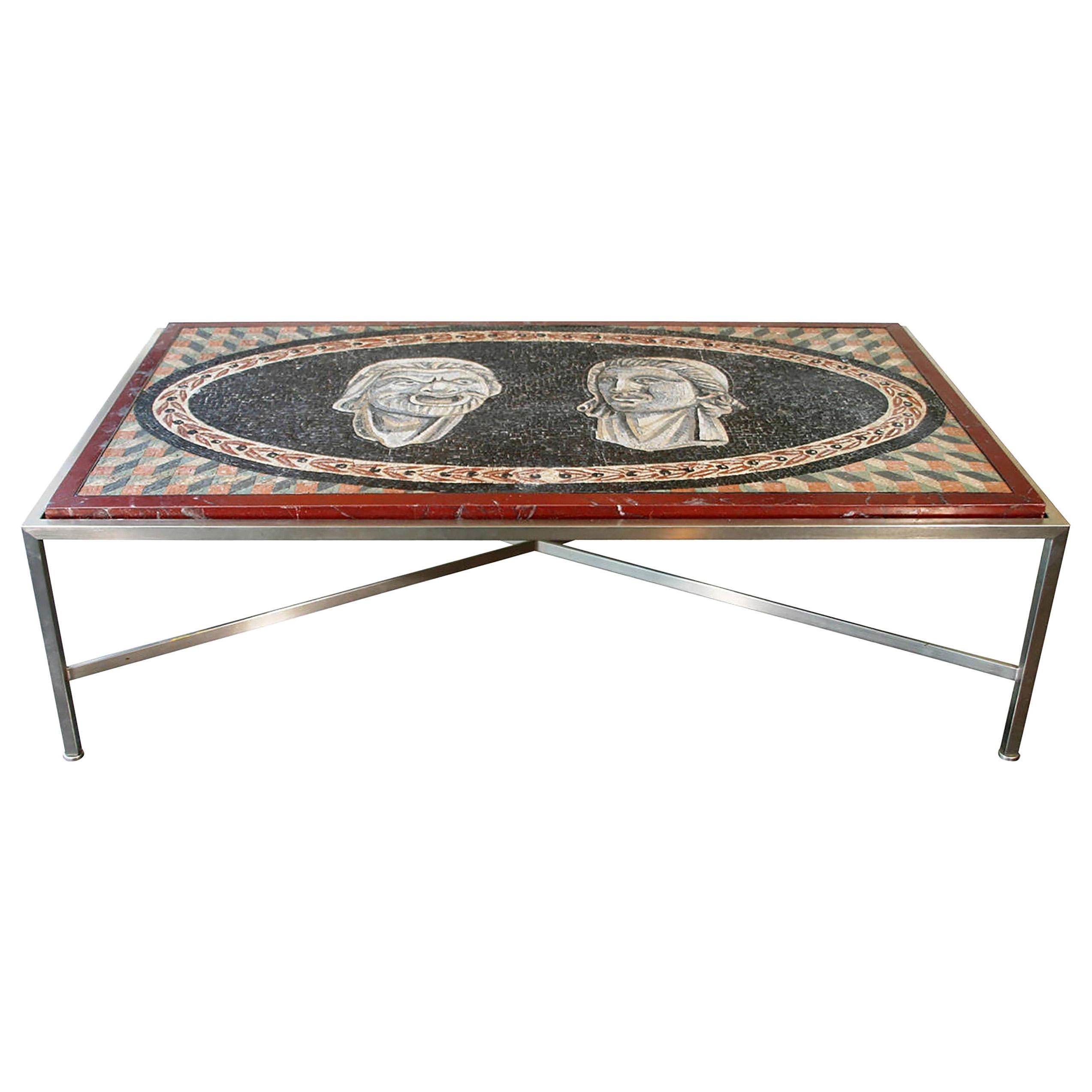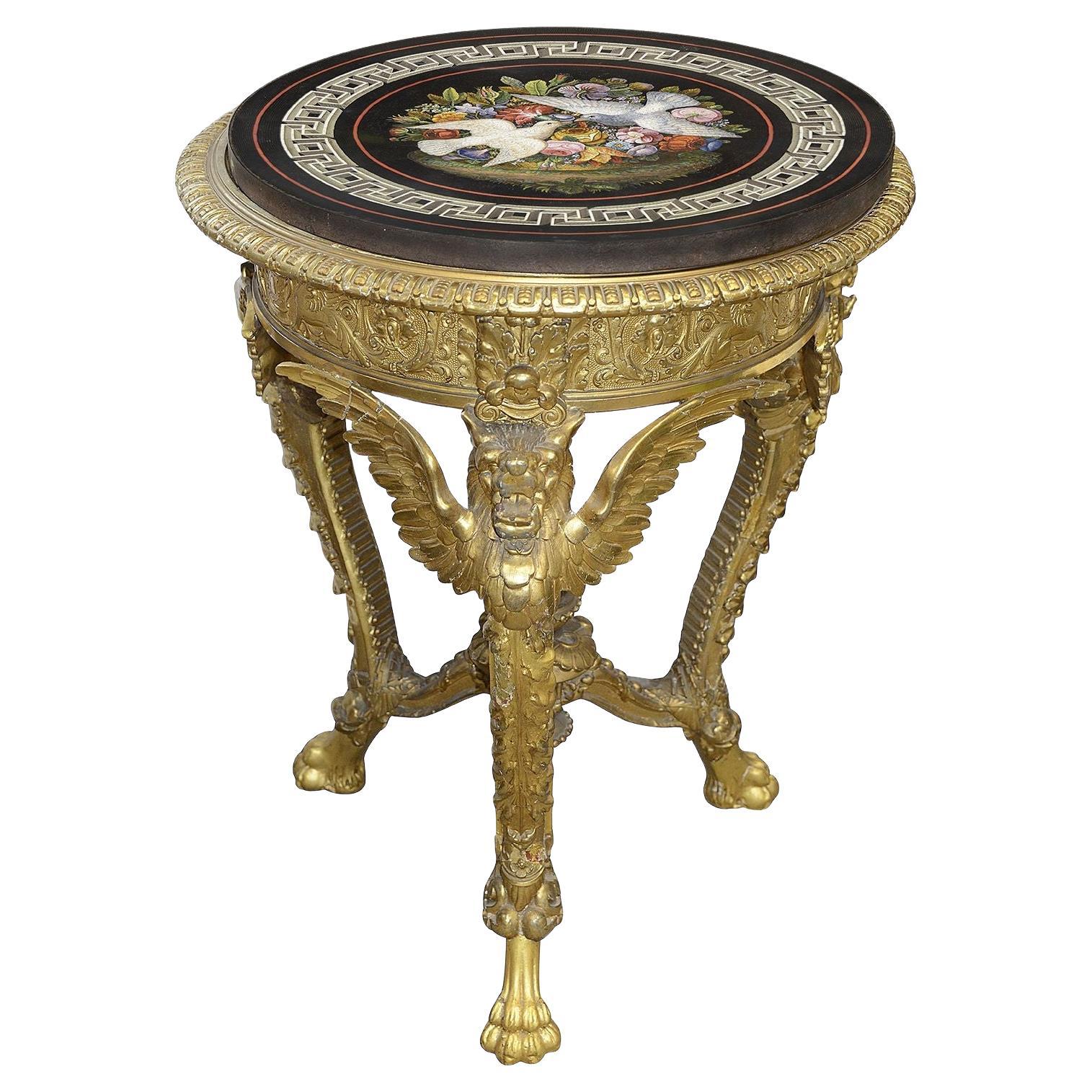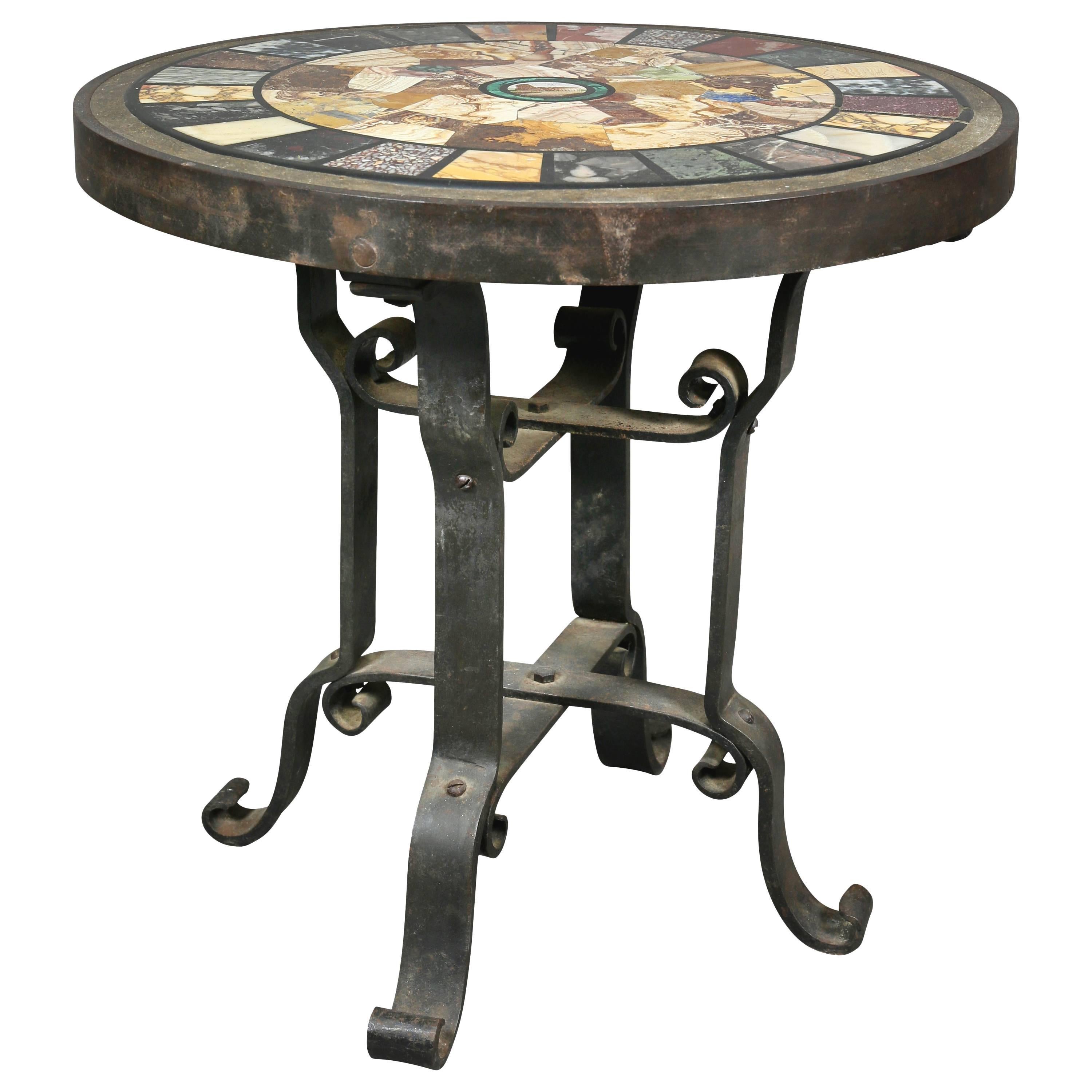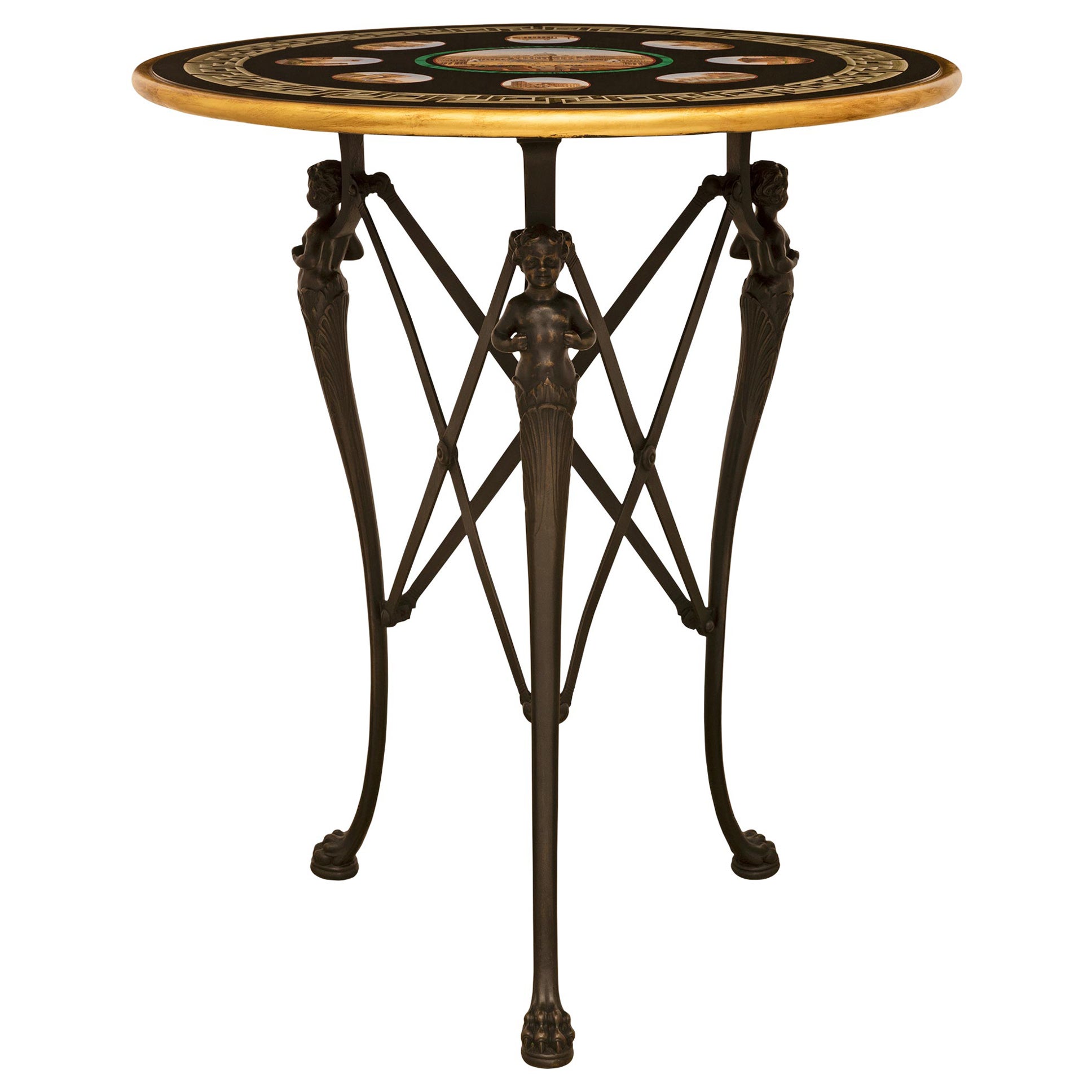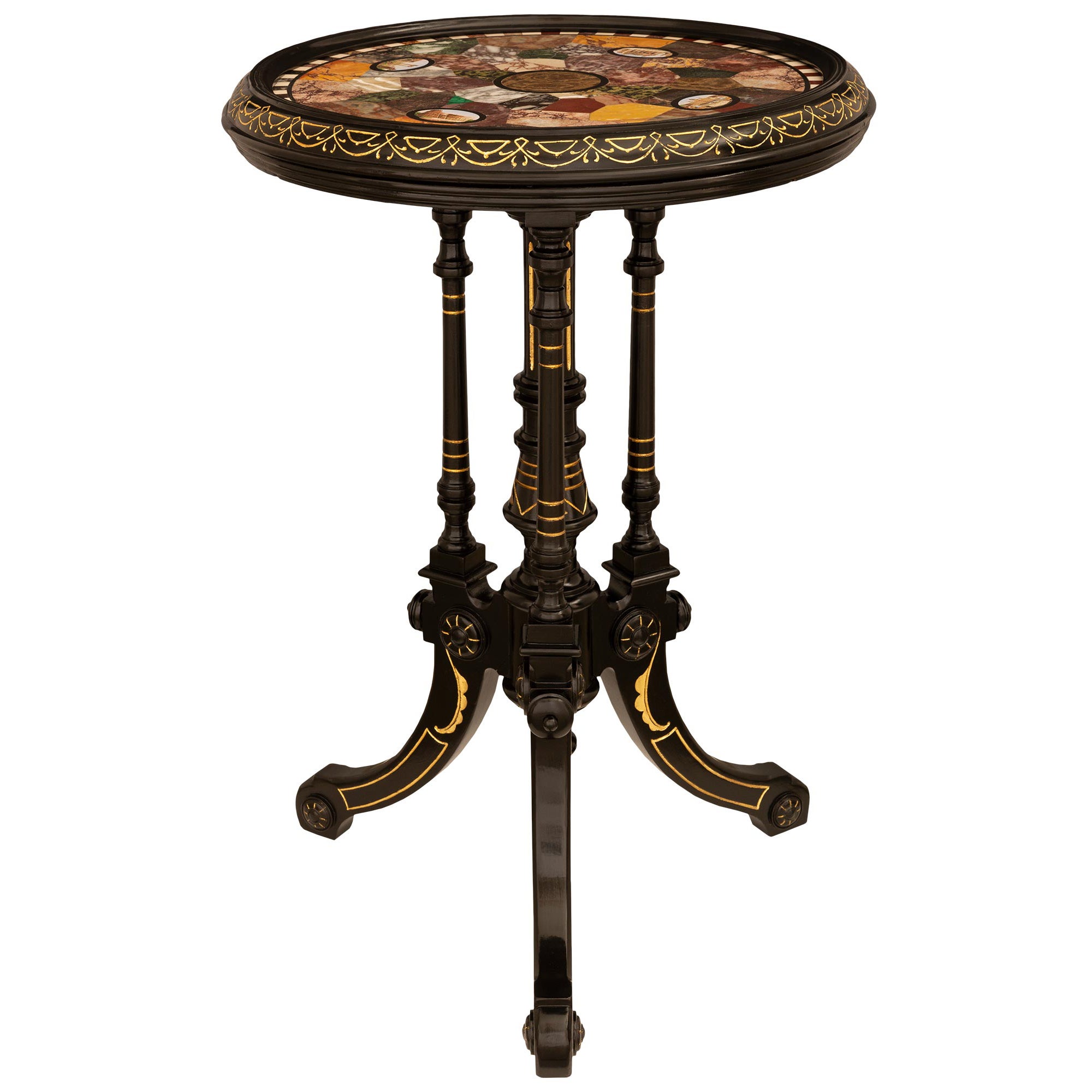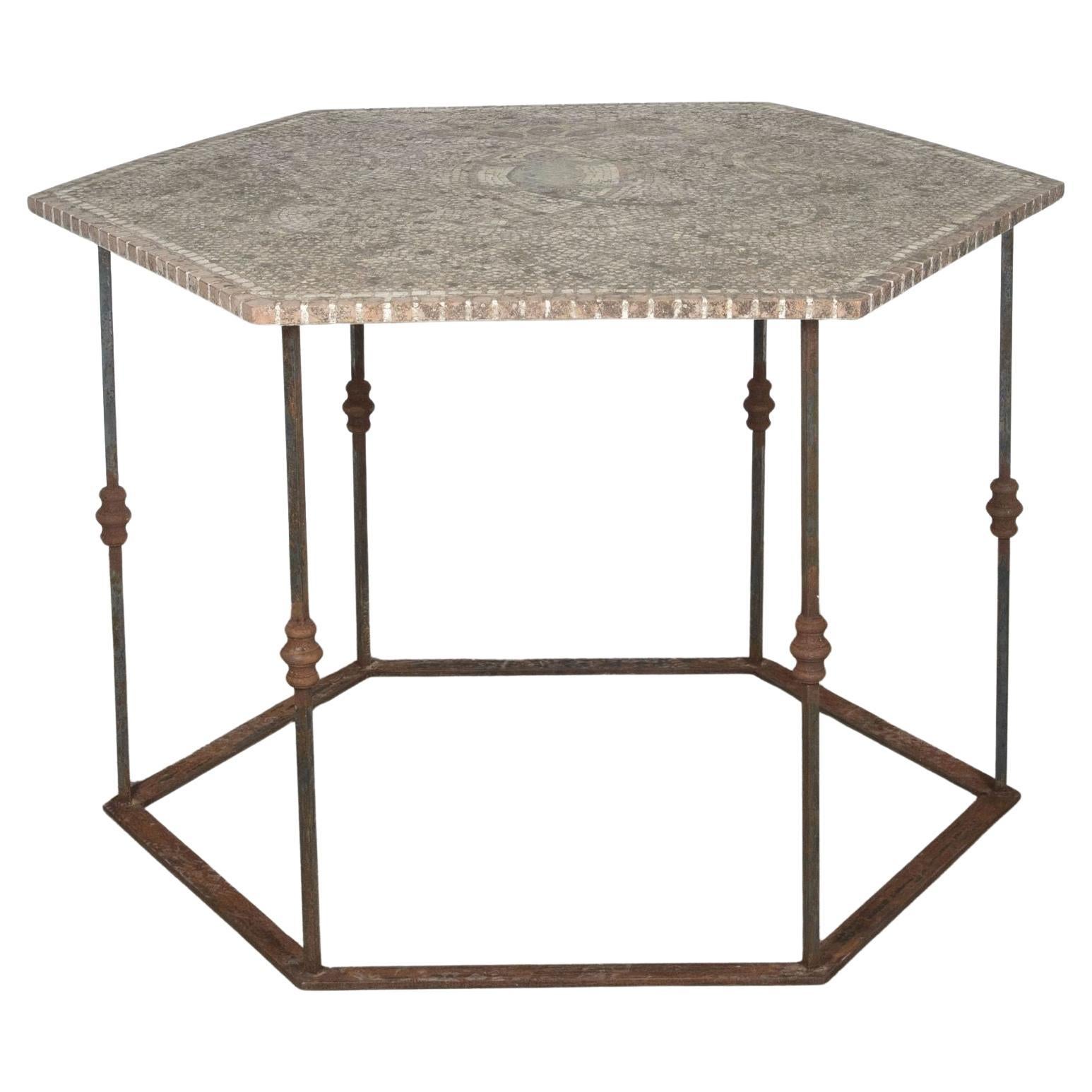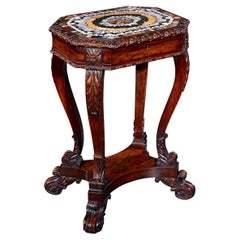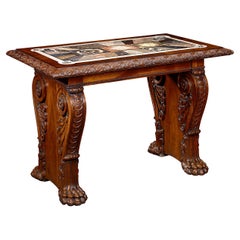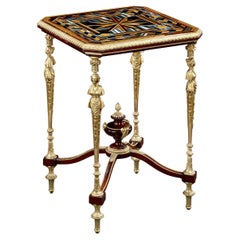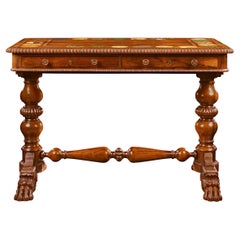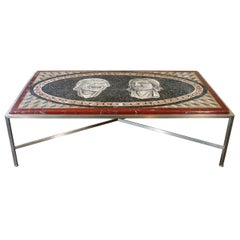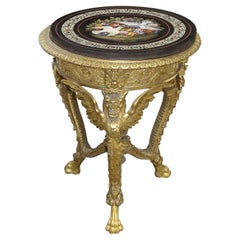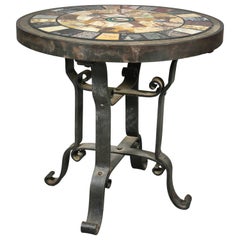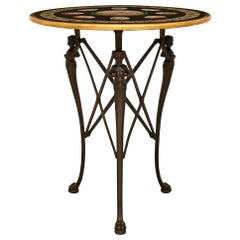Items Similar to Roman Empire Charioteer Mosaic Table
Want more images or videos?
Request additional images or videos from the seller
1 of 6
Roman Empire Charioteer Mosaic Table
$248,500
£185,998.57
€214,923.55
CA$344,586.64
A$385,981.33
CHF 200,667.38
MX$4,766,092.73
NOK 2,556,344.56
SEK 2,416,626.07
DKK 1,603,877.05
Shipping
Retrieving quote...The 1stDibs Promise:
Authenticity Guarantee,
Money-Back Guarantee,
24-Hour Cancellation
About the Item
This Roman Empire mosaic table is an iconic example of Classical history, featuring a 3rd-century mosaic of a Roman Charioteer. More than mere entertainment, the four charioteer teams of the Roman Empire famously evoked passion, loyalty and fervor from their fan bases. This incredible mosaic, certainly specially commissioned, was created to display team loyalty.
Chariot racing was one of the Roman Empire's most popular and thrilling sports, and the grandeur of the chariot races of Rome was beyond compare. As many as 12 four-horse teams raced each other seven times around the mammoth Circus Maximus, which could hold an estimated 150,000 people. The popularity of chariot racing was manifested in various forms, including inscriptions, monuments, mosaics and paintings.
Almost every Roman citizen identified with a faction, either green, white, blue, or red. Our mosaic depicts a charioteer of the blue faction, which represented the elite class in the 3rd century, while the Roman populace supported the green. A nearly identical mosaic, which dates back to the same period and depicts a charioteer of the white faction, is housed in one of Rome’s most prestigious museums, Palazzo Massimo alle Terme. Both their mosaic and ours would have been a cherished decorative item in a prestigious leader’s home or place of business, symbolizing their love for chariot racing and their devotion to a chosen faction.
This exquisite mosaic has been mounted to a marble base and set in a beautifully ornate iron table, likely created in the 19th century, transforming this one-of-a-kind antiquity into a stunning decorative piece.
Circa 3rd century CE
30 1/8" high by 38 3/8" wide by 38 3/4" deep
- Dimensions:Height: 30.13 in (76.54 cm)Width: 38.38 in (97.49 cm)Depth: 38.75 in (98.43 cm)
- Style:Classical Roman (In the Style Of)
- Materials and Techniques:
- Place of Origin:
- Period:
- Date of Manufacture:Circa 3rd century CE
- Condition:Additions or alterations made to the original: This exquisite mosaic has been mounted to a marble base and set in a beautifully ornate iron table, likely created in the 19th century, transforming this one-of-a-kind antiquity into a stunning decorative piece.
- Seller Location:New Orleans, LA
- Reference Number:Seller: 31-69851stDibs: LU891137806112
About the Seller
5.0
Recognized Seller
These prestigious sellers are industry leaders and represent the highest echelon for item quality and design.
Established in 1912
1stDibs seller since 2010
108 sales on 1stDibs
Typical response time: 4 hours
- ShippingRetrieving quote...Shipping from: New Orleans, LA
- Return Policy
Authenticity Guarantee
In the unlikely event there’s an issue with an item’s authenticity, contact us within 1 year for a full refund. DetailsMoney-Back Guarantee
If your item is not as described, is damaged in transit, or does not arrive, contact us within 7 days for a full refund. Details24-Hour Cancellation
You have a 24-hour grace period in which to reconsider your purchase, with no questions asked.Vetted Professional Sellers
Our world-class sellers must adhere to strict standards for service and quality, maintaining the integrity of our listings.Price-Match Guarantee
If you find that a seller listed the same item for a lower price elsewhere, we’ll match it.Trusted Global Delivery
Our best-in-class carrier network provides specialized shipping options worldwide, including custom delivery.More From This Seller
View AllSpecimen Table Attributed to William Trotter
By William Trotter
Located in New Orleans, LA
Octagonal Specimen Table
William Trotter
Early 19th Century
This extraordinary early 19th-century Scottish specimen table is a museum-quality masterpiece attributed to William Trott...
Category
Antique Early 19th Century Scottish Regency Side Tables
Materials
Agate
Blue John Table By Royal Marble Works
Located in New Orleans, LA
This monumental table is a rare masterpiece of English furniture, custom-made by the Royal Marble Works for an important titled estate. Its striking design combines stunning Blue Joh...
Category
Antique 19th Century English Desks and Writing Tables
Materials
Stone, Marble
Falcon's Eye and Tiger's Eye Table by Théodore Millet
Located in New Orleans, LA
Bronze Table with Falcon Eye and Tiger Eye Top
Théodore Millet
Circa 1890
This exceptional table by renowned Parisian ébéniste Théodore Millet epitomizes the grandeur of late 19th-c...
Category
Antique 19th Century French Empire End Tables
Materials
Stone, Bronze
Hardstone and Rosewood Centre Table Attributed to Gillows
By Gillows of Lancaster & London
Located in New Orleans, LA
This remarkable rosewood centre table attributed to legendary firm Gillows showcases masterful craftsmanship and stunningly rare hardstone specimens. The table's base is ornately crafted, complete with lion's paw feet, emphasizing the quality of the wood. The most impressive element of this beautiful piece of furniture, however, is the exquisite inlaid table top. Featuring eighteen semi-precious and hardstone specimens artfully arranged in alternating geometric shapes, rare stones like gem quality Lapis Lazuli, Egyptian porphyry and Siberian amethyst dazzle the eye. Other stones and specimens inlaid in square, circle and hexagon shapes include pyrite lapis lazuli, malachite, green aventurine, agate of amethyst, greek spartan porphyry, labradorite, fossilized wood, occhio di pavone, brèche verte d'égypte, sicilian jaspers, blood stone, spanish brocatelle, siena brocatelle, convent siena and nero antico. The sheer variety and superb quality of these features is an overwhelming visual delight and a triumph of craftsmanship.
Hardstone pieces such as this were popular among the British aristocracy...
Category
Antique 19th Century Regency Center Tables
Materials
Agate, Amethyst, Lapis Lazuli, Malachite, Porphyry
Regency Library Table
Located in New Orleans, LA
This handsome Regency library desk is crafted of rich mahogany and features the straightforward design prevalent in England during the early 19th ...
Category
Antique Early 19th Century English Regency Desks and Writing Tables
Materials
Leather, Mahogany
$14,500
Blue John Table
Located in New Orleans, LA
Blue John Table
Circa 1840
This extraordinary table is among the finest examples of rare Blue John plateaus in a single continuous slab. Elevated by a monumental mahogany base adorn...
Category
Antique 19th Century English Victorian Tables
Materials
Precious Stone, Wood, Mahogany
$268,500
You May Also Like
Italian Neo-Classic Mosaic Roman Face Design and Chrome Base Coffee Table
Located in Queens, NY
Italian Neo-Classic rectangular coffee table with mosaic marble top (19th Century) showing 2 Roman faces set in a steel base with a stretcher.
Category
20th Century Neoclassical Coffee and Cocktail Tables
Materials
Marble
19th Century Italian Micro Mosaic Table
Located in Brighton, Sussex
A fine quality 19th century Italian Micro Mosaic marble top gueridon, depicting a pair of Doves among exotic flowers with a classical Greek pattern boarder, Set in this wonderful han...
Category
Antique 19th Century Italian Center Tables
Materials
Marble
Italian Micromosaic and Specimen Marble Occasional Table
Located in Essex, MA
Circular top now cemented in a wrought iron base with scrolled legs. Top with central view of the Coliseum and surrounded by various hardstones including porphyry.
Category
Antique 1860s Italian Grand Tour End Tables
Materials
Marble
Italian 19th Century Grand Tour Period Bronze and Micro Mosaic Side Table
Located in West Palm Beach, FL
A high quality and extremely decorative Italian 19th century Grand Tour period Patinated bronze and micro mosaic side table. The table is is raised by elegant tapered supports ending...
Category
Antique 19th Century Italian Grand Tour Side Tables
Materials
Marble, Bronze
Italian 19th Century Renaissance St. Specimen Marble And Micro-Mosaic Side Table
Located in West Palm Beach, FL
A most decorative Italian 19th century Renaissance st. Ebonized Fruitwood, Specimen marble and Micro-Mosaic side table. The table is raised on a tripod base with three 'C' scrolled l...
Category
Antique 19th Century Italian Renaissance Side Tables
Materials
Marble
20th Century Sicilian Mosaic Topped Table
Located in Gloucestershire, GB
20th Century weathered Sicilian mosaic garden table top on a later iron base.
Displaying a gecko the symbol of Sicily.
Category
20th Century Italian Center Tables
Materials
Iron
